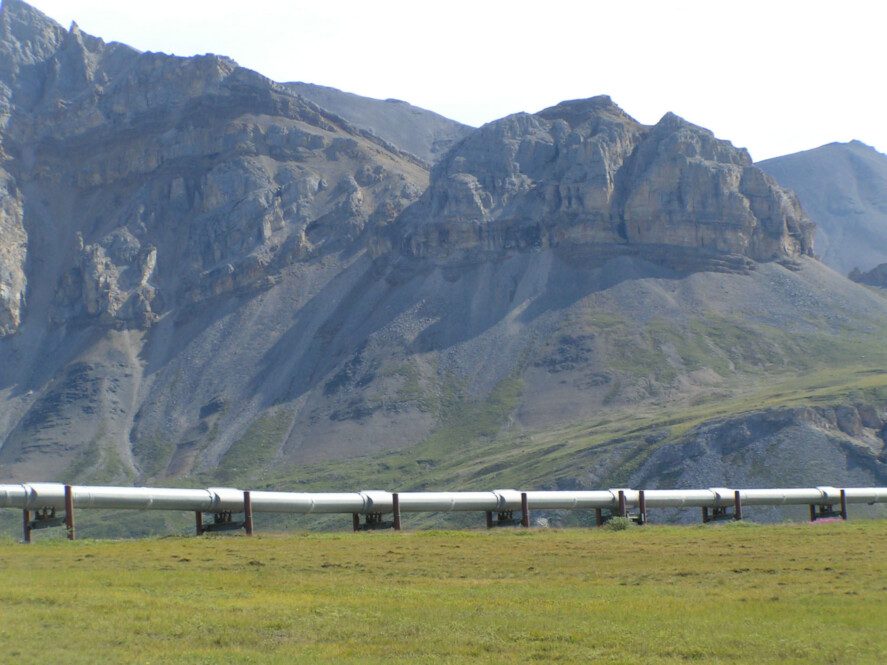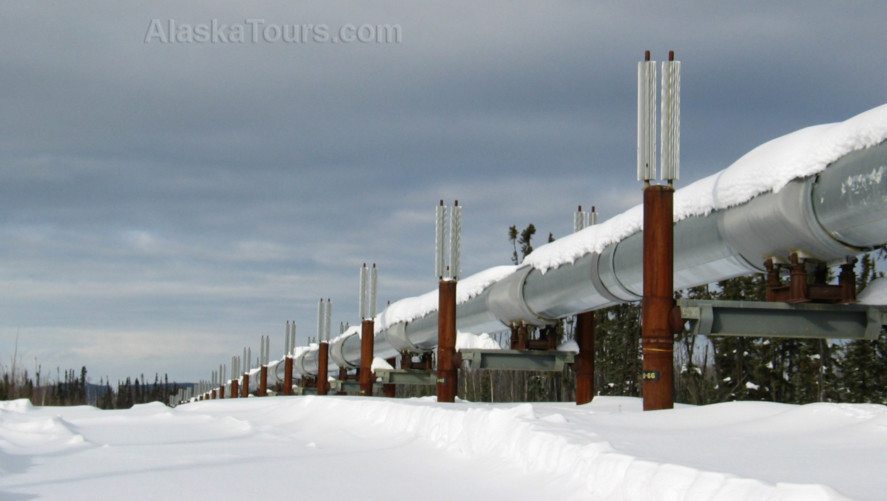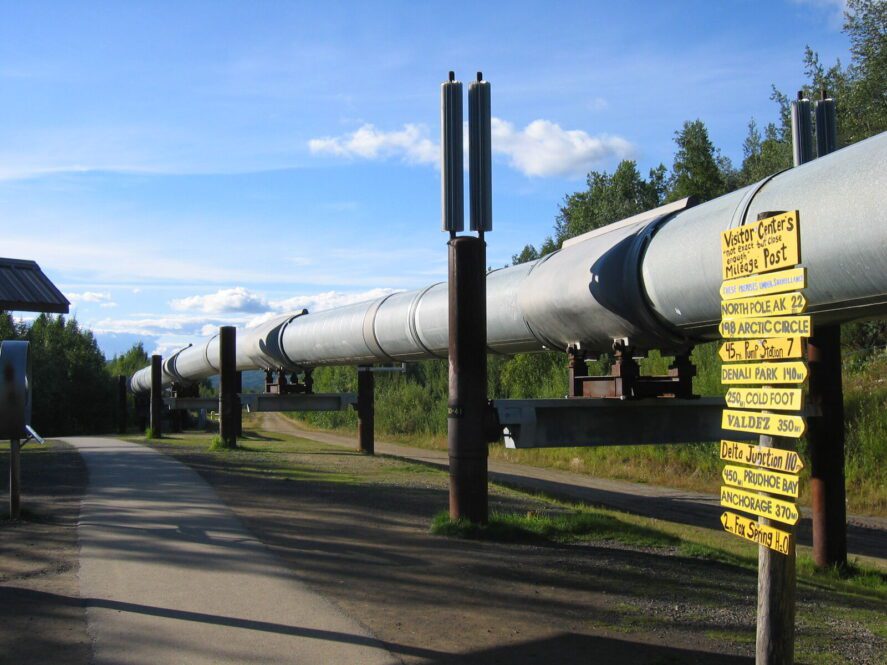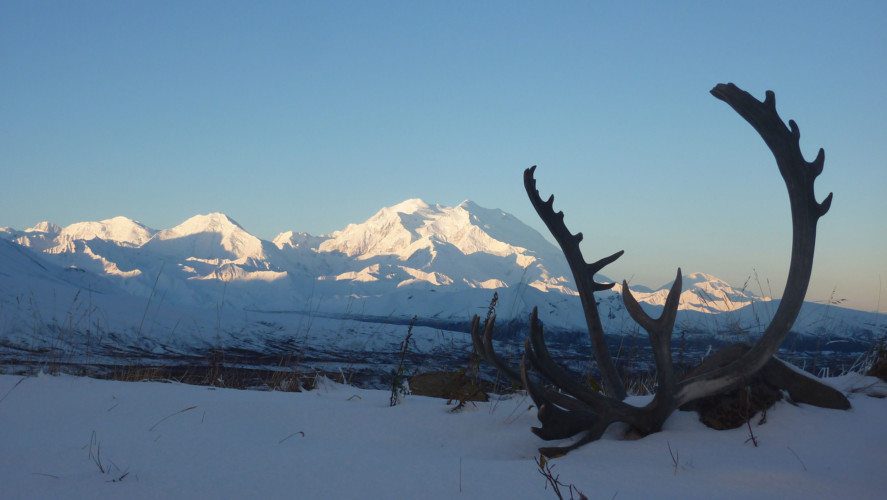Did you know that one of Alaska’s most popular and iconic attractions is actually manmade? It’s true! The Trans-Alaska Pipeline System (TAPS) is an engineering marvel, a tribute to human grit and ingenuity, a symbol of American energy and Alaska independence, and a landmark that ranks high on many Alaska visitors’ checklists.
History, Fun Facts and Trivia About the Trans-Alaska Pipeline
For nearly 50 years, TAPS has delivered Alaska North Slope crude oil from the Arctic exploration outpost of Prudhoe Bay, traversing the state 800 miles north to south and filling oil tankers waiting at the ice-free southern port town of Valdez. The TAPS has moved more than 18 billion barrels of oil over the past 5 decades, relieving stress on America’s demand for oil and, for many Alaskans and their communities, serving as the heartbeat of the state’s economy.

Trans-Alaska Pipeline
The Alaska Pipeline has a history as wild as Alaska, an unbelievable construction story, and a modern mystique that makes it a fascinating draw for many visitors including pipeline aficionados, engineering experts, history buffs, construction workers, people with family members who helped build it in the 1970s, and travelers who simply want to see an engineering feat so important, impressive and interesting in person. TAPS planners, engineers and builders constructed the pipeline with Alaska’s delicate environment, its important wildlife, its Alaska Native residents, and even its unique permafrost and earthquake fault lines in mind. It’s no wonder that it remains an engineering marvel so many years later.
The idea of the pipeline, however, was a political hot potato for years in Alaska and Washington, D.C., until a national gas shortage and world oil turmoil helped it gain momentum and support. Tens of thousands of workers raced to Alaska to help build it and make their fortune in a modern version of Alaska’s Gold Rush. It was also a boon for Alaska’s economy, and especially the construction hub communities of Fairbanks and Valdez. Seemingly even quicker, the pipeline and all of its supporting infrastructure, was built in just over three years, which is practically unthinkable today. Its startup on June 20, 1977, was celebrated in Alaska and newsworthy around the world.
TAPS startup instantly ushered Alaska into a new era as its economic driver, with the state receiving lucrative funds from various taxes on the oil producers who put their product into the pipeline, and on the pipeline’s operation and land use. The pipeline remains a positive for more than a thousand pipeline employees, providing maintenance and support services all along the line. Each pipeline job also fuels numerous other jobs in communities across Alaska, not to mention being a critical funding source for nonprofits and other community services in these areas.
And then there’s the hardcore group of Alaska travelers who traverse the pipeline in truly remarkable ways. For example, there’s a famous Alaska book written by a Fairbanks hiker who walked the pipeline’s entirety with his dog. And a surprising amount of people take epic quests on foot or by bike between Valdez and Prudhoe Bay, traveling from far off places such as Key West, Florida, and even South America to reach the Arctic Ocean in Prudhoe Bay.

Trans-Alaska Pipeline
Best Places to View the Trans-Alaska Pipeline
While TAPS travels through some of Alaska’s most remote terrain, the pipeline is hard to miss if you’re passing by. Its shiny silver insulation shimmers under the Midnight Sun and it sits high upon vertical supports suspended in the air and a whopping 48-inches in diameter. Along its 800 miles of pipe, half travels above ground which is unlike most of the world’s pipelines which are usually below ground and unseen. And TAPS is also unique in the terrain it has to cross. With its path weaving through some of Alaska’s most demanding and breathtaking landscapes (including three mountain ranges and hundreds of water crossings), it’s no surprise that TAPS is the world’s most well-known and photographed pipeline.
The best place to get close to TAPS is at a large turnoff about 15 minutes north of Fairbanks. While not exactly a Visitors Center, this is a peaceful place to stand next to and under the pipe to appreciate its magnitude, grab some fun photos, and learn about the pipeline’s science, history, and characteristics from nearby educational signage. This is also a classic Alaska setting, tranquil and scenic, surrounded by trees, and with a creek running nearby in the summertime. In the winter, this is also a popular place for photographers to capture two amazing Alaska features in one: the pipeline’s dark silhouette framed against a vibrant, colorful sky filled with the dancing northern lights.

Day 4: Pick up your rental car and explore Fairbanks (Angie Cerny/Explore Fairbanks)
The pipeline can also be seen in many other spots across the state. It’s visible for long stretches alongside one of Alaska’s main roadways – the Richardson Highway, which runs from Fairbanks to Valdez. Numerous highway vista pull-offs along the way present great photo opportunities to catch views of the pipeline as it is framed by Alaska’s mountains, passes over major Alaskan rivers, and winds off into vast natural wilderness landscapes. A popular self-drive tour crafted by Alaska Tours takes visitors by car between Fairbanks to Valdez on the Richardson Highway as they follow the Trans Alaska pipeline route.
For travelers hoping to visit the Arctic Circle and beyond, the TAPS pipeline is also a regular sight north of Fairbanks along the Steese Highway and the Dalton Highway, also known as the Haul Road. The Haul Road, and its many bridges, were built specifically for providing supplies and services to those building the pipeline, and to support workers on the North Slope and at pipeline pump stations along the way. Anyone traveling these roads are likely to see lots of wildlife sightings of bears, caribou, muskox, and possibly even foxes and wolves. Do note, however, that these are remote roadways and tough traveling, though and most rental car companies won’t allow their vehicles on these mostly gravel roads. A handful of companies specialize in showing visitors an Arctic Circle experience by shuttle bus or small plane, making special stops along the way for pipeline poses, admiring the mighty Yukon River, and visiting the quirky town of Coldfoot. From day trips to epic road trips, Alaska Tours can connect travelers to the right Arctic Circle and beyond trips that are perfect for them.
In 2027, Alaska will celebrate 50 years of TAPS operations, a significant milestone for a manmade wonder that coexists in of the world’s most wild natural settings.

Dalton Highway and Denali
